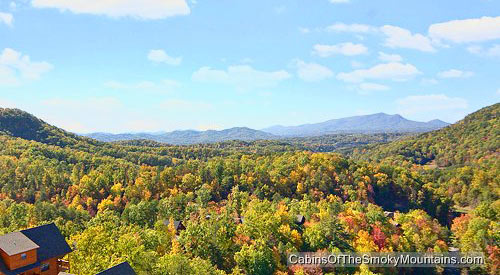Local broadcaster WBIR Channel 10 News has footage of Great Smoky Mountains National Park in a recent story showing the dramatic recovery of the forests, following the wildfires of 19 months ago in the Gatlinburg, TN area. As the interview with the park’s fire ecologist Rob Klein makes clear, this is a great example of how quickly forests can snap back and regenerate with new life following a wildfire.
According to the story, 70 percent of the areas affected by the fires of November, 2016, are recovering very rapidly. Hundreds of brand-new Table Mountain Pine trees have already shot up to around 2 feet in height. Within a couple more years, says Klein, it will be difficult to see that these areas were even burned. In fact, entire areas will become transformed into new forests over the next decade.
This is all good news, and it’s quite astonishing to see the images of before and after in various parts of the national park.
In large part this rapid recovery is due to the nature of the fire itself, which was an unusual kind. This fire wasn’t like the wildfires we’re accustomed to seeing, where a solid swath of burning forest gradually moves and devastates everything in its path. This fire was more like random scattershot, terrifying because of how quickly new hot spots developed, but also leaving large areas completely untouched.
The wildfires of 2016 were blown by sudden, high-intensity storm winds, which picked up embers from an already smoldering fire high on an outcrop that firefighters had not yet been able to extinguish. The winds carried the embers and dropped them down with no warning in multiple places, miles away. Summer drought had turned everything to tinder, and raging fires developed in minutes. Sometimes firefighters would find themselves surrounded by new fires that hadn’t existed minutes before.
The fires quickly started, and relatively quickly – as these things go – ended. And the rains came, so we were lucky, as well as having superb responders.
We were already seeing phenomenal recovery beginning in the summer of 2017. It’s worth revisiting the report we made at that time, which also covered the healing effect of fungus proliferating across the charred ground: After the Fire, the Smoky Mountains Surge Back.
What was clear after the fire was that the forests had not lost much of their canopy. Mostly it was the undergrowth on the ground that caught fire, which charred the trunks of trees but never took hold enough to destroy them. The char itself on bark and on the ground acted as a fertile environment for new growth, in the well adapted manner of forests to natural fires.
As we said in that article:
The fires were always about the forest floor. We lost some canopy trees, but much of the burn involved dead leaf and undergrowth. Some bark was singed but roots were largely untouched, and most trees escaped intact, leaving the national park with its numerous forests and more than 100 species of trees.
Forests are Green in 2018
It’s been a green summer, now in 2018, and most of the burned places have put forth new shoots. Even so, it’s amazing to see the pictures of Chimney Tops – where the original fire started – and compare how it looked back then with the vivid green of today.
Here’s the story from WBIR. You can see it on their page, or take a look here at how our forests have recovered:
And here from the WBIR Facebook page are some views of the dramatic change. Feel free to click through to WBIR’s full photo album for more uplifting pictures of the – very green – national park.


